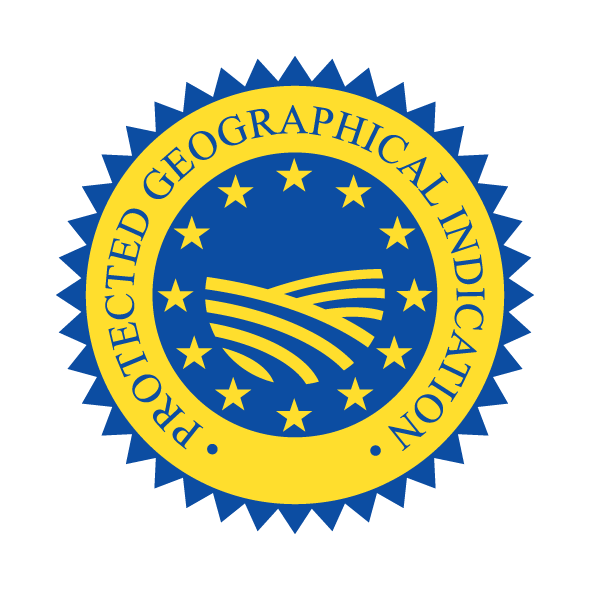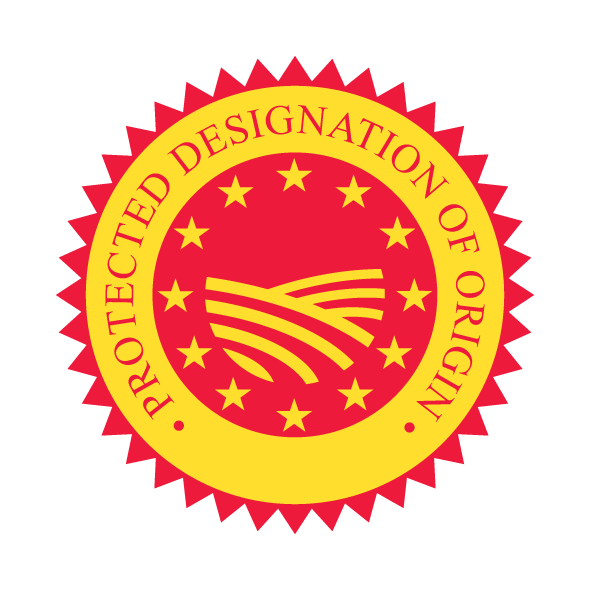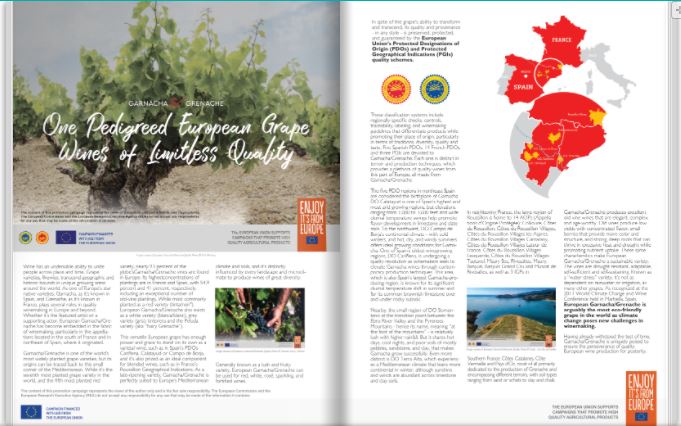Would you like to read all about our collaboration with Sommelier’s print and digital go to publication, The SOMM Journal?
He’re the link and details in case you’ve missed February/March 2022 edition!
Garnacha/Grenache: One Pedigreed European Grape – Wines of Limitless Quality
Wine has an undeniable ability to unite people across place and time. Grape varieties, likewise, transcend geographic and historic bounds in unique growing areas around the world. As one of Europe’s star native varieties, Garnacha, as it’s known in Spain, and Grenache, as it’s known in France, plays several roles in quality winemaking in Europe and beyond.
Whether it’s the featured artist or a supporting actor, European Garnacha/Grenache has become embedded in the fabric of winemaking, particularly in the appellations located in the south of France and in northeast of Spain, where it originated.
Garnacha/Grenache is one of the world’s most widely planted grape varieties, but its origins can be traced back to this small corner of the Mediterranean. While it’s the seventh most planted grape variety in the
world, and the 5fth most planted red variety, nearly 93 percent of the
globe’s Garnacha/Grenache vines are found in Europe. Its highest concentrations of plantings are in France and Spain, with 54.9 percent and 41 percent, respectively, including an exceptional number of old-vine plantings.
While most commonly planted as a red variety (tinta/noir”), European Garnacha/Grenache also exists as a white variety (blanca/blanc), grey variety (gris), tintorera and the Peluda variety (aka “hairy Grenache”).
This versatile European grape has enough power and grace to stand on its own as a varietal wine, such as in Spain’s PDOs Cariñena, Calatayud or Campo de Borja, and it’s also prized as an ideal component for blended wines, such as in France’s Roussillon Geographical Indications. As a late-ripening variety, Garnacha/Grenache is perfectly suited to Europe’s Mediterranean climate and soils, and it’s distinctly influenced by every landscape and microclimate to produce wines of great diversity.
Generally known as a lush and fruity variety, European Garnacha/Grenache can be used for red, white, rosé, sparkling, and fortified wines.
In spite of the grape’s ability to transform and transcend, its quality and provenance – in any style – is preserved, protected, and guaranteed by the European Union’s Protected Designations of Origin (PDOs) and Protected Geographical Indications (PGIs) quality schemes. These classification systems include regionally-specific checks, controls, traceability, labeling, and winemaking guidelines that differentiate products while promoting their place of origin, particularly in terms of traditions, diversity, quality and taste.
Five Spanish PDOs, 14 French PDOs, and three PGIs are devoted to Garnacha/Grenache. Each one is distinct in terroir and production techniques, which provides a plethora of quality wines from this part of Europe, all made from Garnacha/Grenache.
The five PDO regions in northeast Spain are considered the birthplace of Garnacha. DO Calatayud is one of Spain’s highest and most arid growing regions, but elevations ranging from 1,000 to 3,600 feet and wide diurnal temperature swings help promote flavor development in limestone and slate soils. To the northwest, DO Campo de Borja’s continental climate – with cold winters, and hot, dry, and windy summers- offers ideal growing conditions for Garnacha. One of Spain’s oldest winegrowing regions, DO Cariñena, is undergoing a
quality revolution as winemakers seek to elevate Garnacha wines through contemporary production techniques. This area, which is also Spain’s largest Garnacha-producing region, is known for its significant
diurnal temperature shift in summer and for its common brownish limestone over and under rocky subsoil. Nearby, the small region of DO Somontano at the transition point between the Ebro River Valley and the Pyrenees Mountains – hence its name, meaning “at the foot of the mountains” – is relatively lush with higher rainfall. But it shares hot
days, cool nights, and poor soils of mostly pebbles, sandstone, and clay, that makes Garnacha grow successfully. Even more distinct is DO Terra Alta, which experiences a Mediterranean climate that leans more continental in winter, although sunshine and winds are abundant across limestone and clay soils.
In neighboring France, the large region of Roussillon is home to 14 AOPs (Appellations d’Origine Protégée): Collioure, Côtes du Roussillon, Côtes du Roussillon Villages, Côtes du Roussillon Villages les Aspres, Côtes du Roussillon Villages Camarany, Côtes du Roussillon Villages Latour de France, Côtes du Roussillon Villages Lesquerde, Côtes du Roussillon Villages Tautavel, Maury Sec, Rivesaltes, Maury,
Banyuls, Banyuls Grand Cru and Muscat de Rivesaltes, as well as 3 IGPs in Southern France: Côtes Catalanes, Côte Vermeille and Pays d’Oc, most of all primarily dedicated to the production of Grenache and encompassing different terroirs, with soil types ranging from sand or schists to clay and chalk.
Garnacha/Grenache produces excellent old-vine wines that are elegant, complex, and age-worthy. Old vines produce low yields with concentrated flavor, small berries that provide more color and structure, and strong, deep roots that can thrive in excessive heat and drought while promoting nutrient uptake.
These same characteristics make European Garnacha/Grenache a sustainable variety. The vines are drought-resistant, adaptable, self-sufficient and self-sustaining. Known as a “water-stress” variety, it’s not as dependent on rainwater or irrigation, as many other grapes.
As recognized at the 2011 World Climate Change and Wine Conference held in Marbella, Spain, European Garnacha/Grenache is
arguably the most eco-friendly grape in the world as climate change poses new challenges in winemaking.
Having already withstood the test of time, Garnacha/Grenache is uniquely poised to ensure the perseverance of quality European wine production for posterity.
*Disclaimer: The content of this promotion campaign represents the views of the author only and is his/her sole responsibility. The European Commission and the European Research Executive Agency (REA) do not accept any responsibility for any use that may be made of the information it contains.












